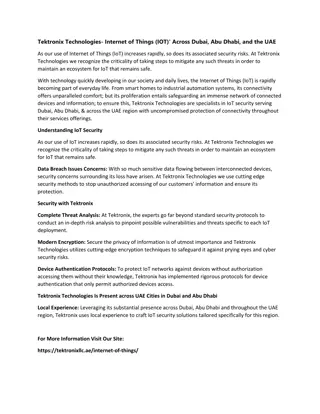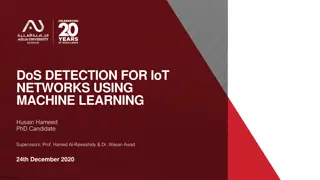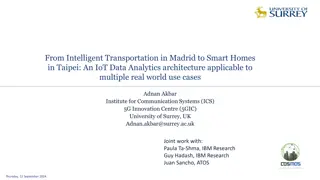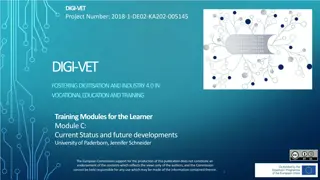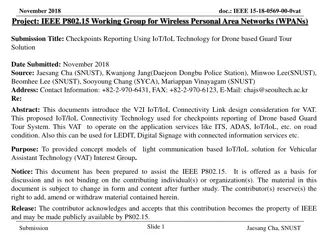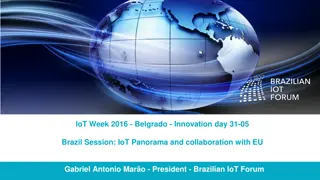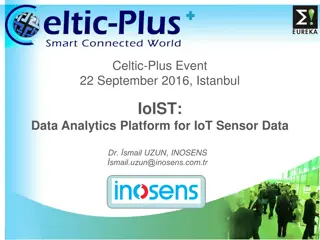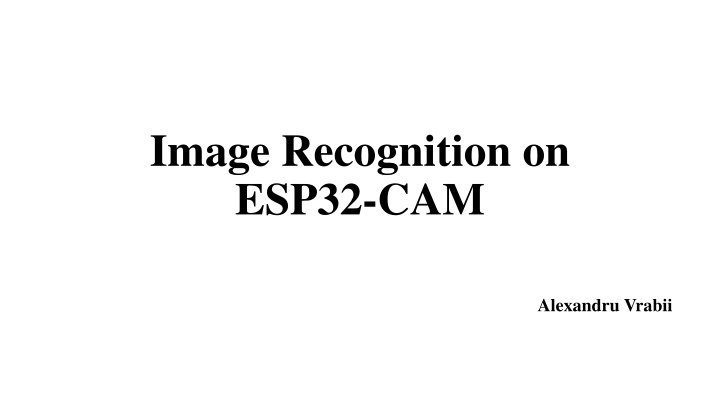
ESP32-CAM Image Recognition Project by Alexandru Vrabii
"Explore the ESP32-CAM image recognition project by Alexandru Vrabii, focusing on training a machine learning model to identify objects and control a servo motor. Learn about data acquisition, machine learning model using random forest classifier, results, and conclusions for implementing image recognition on ESP32. Discover the feasibility of ESP32 in image processing applications."
Download Presentation

Please find below an Image/Link to download the presentation.
The content on the website is provided AS IS for your information and personal use only. It may not be sold, licensed, or shared on other websites without obtaining consent from the author. If you encounter any issues during the download, it is possible that the publisher has removed the file from their server.
You are allowed to download the files provided on this website for personal or commercial use, subject to the condition that they are used lawfully. All files are the property of their respective owners.
The content on the website is provided AS IS for your information and personal use only. It may not be sold, licensed, or shared on other websites without obtaining consent from the author.
E N D
Presentation Transcript
Image Recognition on ESP32-CAM Alexandru Vrabii
Introduction The idea for this project came from the desire to develop my bachelor project in a different direction. I wanted to try to develop an image recognition system based on ESP32. The implementation of this project would lead to reduced expenses for developing an image recognition system. A low cost will allow to integrate such kind of systems in more area.
Project Overview Objectives The ideal scenario would be: Collect images using the ESP32-CAM Train a machine learning model that would learn to recognize three types of objects. The ESP32-CAM recognizes the object ESP32-CAM sends the recognized label of image to a Firebase database. Using an ESP8266, I retrieve the information from Firebase and depending on the recognized object, I control an SG90 servo motor to simulate sorting the recognized objects.
Data Acquisition I collected about 4000 pictures for 3 different classes. The classes defined by me are: background - image of the empty background (without recognizable objects) alenka - a type of candy menthol - another type of candy. After the images were collected and grouped in folders with specific label, we can proceed to image processing. To optimize the training time of the ML model, the images were converted into black and white gradient, and their resolution was reduced to 40 30 pixels.
Machine Learning Model Random Forest classifier is a robust algorithm used for classification tasks. Key Features: Multiple Decision Trees: Constructs a forest of decision trees during training. Randomness: Adds randomness to model building by selecting random subsets of features for splitting nodes in each decision tree. Voting System: For classification tasks, each decision tree in the forest gives a vote for a class. The final class prediction is based on the majority vote from all trees.
Results and Conclusions The results of implementing the project are contradictory. On one hand, I was able to implement an Image Recognition model on an ESP32 that works. The downside is that the image recognition process is very unstable, and with a slight deviation in background, lighting, or image capture perspective, the model fails. In conclusion, the ESP32 family can be used in the process of Image Recognition, but it is important to consider that ESP32 boards were not created for image processing. I would recommend ESP32 as a tool for Image Recognition in cases where a cheap and compact solution is needed, which aims to recognize objects that can be easily differentiated.


